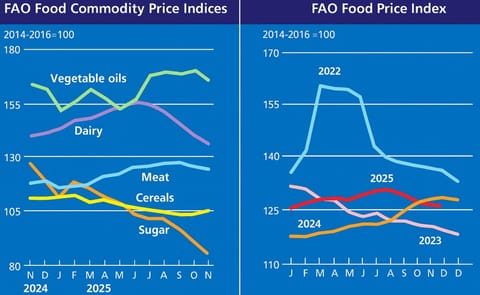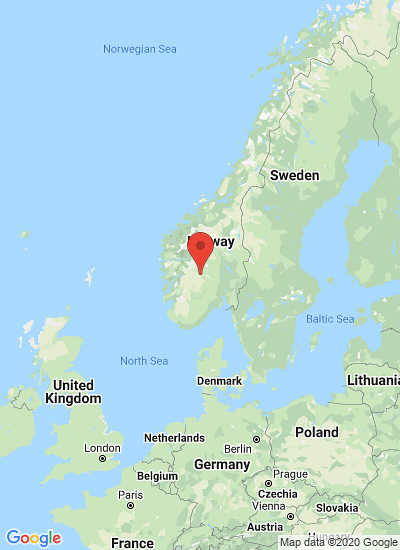Hans Blom (Courtesy: Nofima)
Zeracryl applies lactic acid bacteria to reduce acrylamide in food

Zeracryl, a small research-based Norwegian company has developed a method to reduce the formation of the carcinogenic compound acrylamide during industrial production of potatoes and coffee. International food giants are paying attention.
In 2002 Swedish researchers found that the carcinogenic compound acrylamide was present in many foods – a discovery that grabbed international headlines and frightened consumers and food safety authorities around the world. What these production foods had in common was high-temperature cooking which formed a crust or browning reaction. The acrylamide issue has had dramatic consequences for the manufacturers involved.
Bread, crackers and biscuits, potatoes and coffee
Since then a great deal of research has been focused on acrylamide. The compound has been found in bread, some types of crackers and sweet biscuits, deep-fried potato products and coffee. Research has also been carried out on the compound’s effects on humans and on production methods that can reduce or remove acrylamide from our foods.
Norwegian Hans Blom has been widely involved in research on reducing and removing acrylamide. When the issue erupted, he was working with food safety at Norway’s largest food-related research institute Matforsk AS (now Nofima) and had already acquired an in-depth understanding of the challenges that the food industry faces.
He and his research team found a method that limits the formation of acrylamide during the production of potato products and coffee. It was the patent for this method that provided the springboard for the company Zeracryl.
Tiny heroes: Lactobacilli
“Our method is based on lactic acid fermentation,” explains Dr Blom. “Acrylamide is formed as a reaction between the amino acid asparagine and simple sugars such as glucose and fructose. Put simply, the lactic acid bacteria remove these compounds and inhibit the formation of acrylamide.”
The team’s ongoing experiments show that 10 to 15 minutes’ immersion in lactic acid bacteria culture before cooking reduces acrylamide formation in the final product by roughly 90 per cent.
Zeracryl will continue its work in the research project Lactic acid fermentation as a tool to reduce formation of acrylamide in fried potato products and roasted coffee in cooperation with the international food conglomerate Nestlé, the Norwegian producers of potato products Hoff AS and Maarud, and the research institute Nofima. The project is scheduled to run until 2012 and is supported by the Research Council of Norway's Food Programme.
In 2002 Swedish researchers found that the carcinogenic compound acrylamide was present in many foods – a discovery that grabbed international headlines and frightened consumers and food safety authorities around the world. What these production foods had in common was high-temperature cooking which formed a crust or browning reaction. The acrylamide issue has had dramatic consequences for the manufacturers involved.
Bread, crackers and biscuits, potatoes and coffee
Since then a great deal of research has been focused on acrylamide. The compound has been found in bread, some types of crackers and sweet biscuits, deep-fried potato products and coffee. Research has also been carried out on the compound’s effects on humans and on production methods that can reduce or remove acrylamide from our foods.
Norwegian Hans Blom has been widely involved in research on reducing and removing acrylamide. When the issue erupted, he was working with food safety at Norway’s largest food-related research institute Matforsk AS (now Nofima) and had already acquired an in-depth understanding of the challenges that the food industry faces.
He and his research team found a method that limits the formation of acrylamide during the production of potato products and coffee. It was the patent for this method that provided the springboard for the company Zeracryl.
Tiny heroes: Lactobacilli
“Our method is based on lactic acid fermentation,” explains Dr Blom. “Acrylamide is formed as a reaction between the amino acid asparagine and simple sugars such as glucose and fructose. Put simply, the lactic acid bacteria remove these compounds and inhibit the formation of acrylamide.”
The team’s ongoing experiments show that 10 to 15 minutes’ immersion in lactic acid bacteria culture before cooking reduces acrylamide formation in the final product by roughly 90 per cent.
Zeracryl will continue its work in the research project Lactic acid fermentation as a tool to reduce formation of acrylamide in fried potato products and roasted coffee in cooperation with the international food conglomerate Nestlé, the Norwegian producers of potato products Hoff AS and Maarud, and the research institute Nofima. The project is scheduled to run until 2012 and is supported by the Research Council of Norway's Food Programme.
¿Te gustaría recibir noticias como esta por correo electrónico? ¡Únete y suscríbete!
Get the latest potato industry news straight to your WhatsApp. Join the PotatoPro WhatsApp Community!
Empresa Destacada
Contenido Patrocinado
Contenido Patrocinado
Contenido Patrocinado
Contenido Patrocinado











